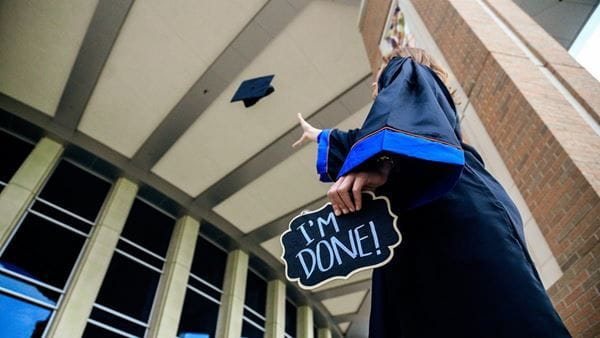College Graduation Rates: The Truth behind the Statistic
by Alexandra Rendon, former admissions officer at UC San Diego
If you flip through any college admission brochure, you’re likely to encounter a number of statistics and rankings highlighting the best features of that college. Top 10 in this, ranked #1 in that, with this percentage of students doing X, Y, and Z. One of those statistics you may come across is the college’s graduation rate. On the surface this statistic seems to carry a lot of weight. After all, graduation rates are a predictor of achievement, and the best college must be the college with the highest graduation rate, right? Not so fast. While the question of “best” is always going to be subjective, graduation rate is not always a predictor of quality of education.
To understand why you should be cautious about jumping to conclusions about the quality of a college’s education based on its graduation rate, it’s important to understand the metrics that are used to measure this statistic. The federal graduation rate refers to the number of first-time freshmen that graduate from that college within a six-year period. Students who are considered non-traditional, meaning those who are transfers or attend college part-time, are not included in this statistic. Often universities who have larger numbers of transfer and part-time students have wonderful support systems and resources in place to help students achieve academic success. Many state university systems also have requirements to admit a specific percentage of their class as transfer students to help provide a pathway from the community college system to a four-year degree. Not including these non-traditional students fails to show the full picture of student outcomes and fails to capture the education access work done by these colleges.
Along with not showing the full picture of a college, graduation rate is also not a true indicator of overall degree achievement. Students who may need to take a leave of absence from the college or students who choose to transfer from that college and continue their education elsewhere negatively impact the graduation rate. The statistic seems to imply that these students don’t go on to earn degrees. However, that’s not necessarily the case. Yes, some students do truly drop out, but others may go on to earn a degree after that leave of absence or finish their degree at another college as a transfer student.
What are the other factors that may bring a college’s graduation rate down? The major factors are finances, family commitments, and academic preparation. These factors have more to do with the student than the college itself. Not being able to afford to continue education or experiencing a change in family circumstance can lead to a student dropping out, taking a leave of absence, or going to school part-time while working. All these pathways would affect the graduation rate in the same way.
Academic preparation is one of the factors that seems to directly correlate to higher graduation rates. It makes sense that highly selective colleges often have very high graduation rates. This is simply because academic preparation is a major factor in admission for highly selective institutions. It’s also less common for these institutions to bring in large numbers of non-traditional students. Ultimately graduation rate is less an indicator of quality of education and more an indicator of a student’s socioeconomic status, family circumstances, and preparation for college.
If graduation rate isn’t truly a predictor of quality of education or student outcomes, what does really matter? It all comes down to answering that subjective question of what is the “best.” Perhaps the best college is the college that promotes educational access through higher admission rates and gives every kind of student opportunities and resources to succeed. Maybe the best college is the college that has a strong transfer pathway or supports students who need to take a leave of absence or attend part-time for a semester due to financial challenges. Ultimately the best college is the college that feels like it’s the right fit for you and is going to provide resources to support your academic and personal achievement. So, instead of asking about a college’s graduation rate, consider instead asking how that college works to support positive student outcomes and what resources they have to help their students succeed.





